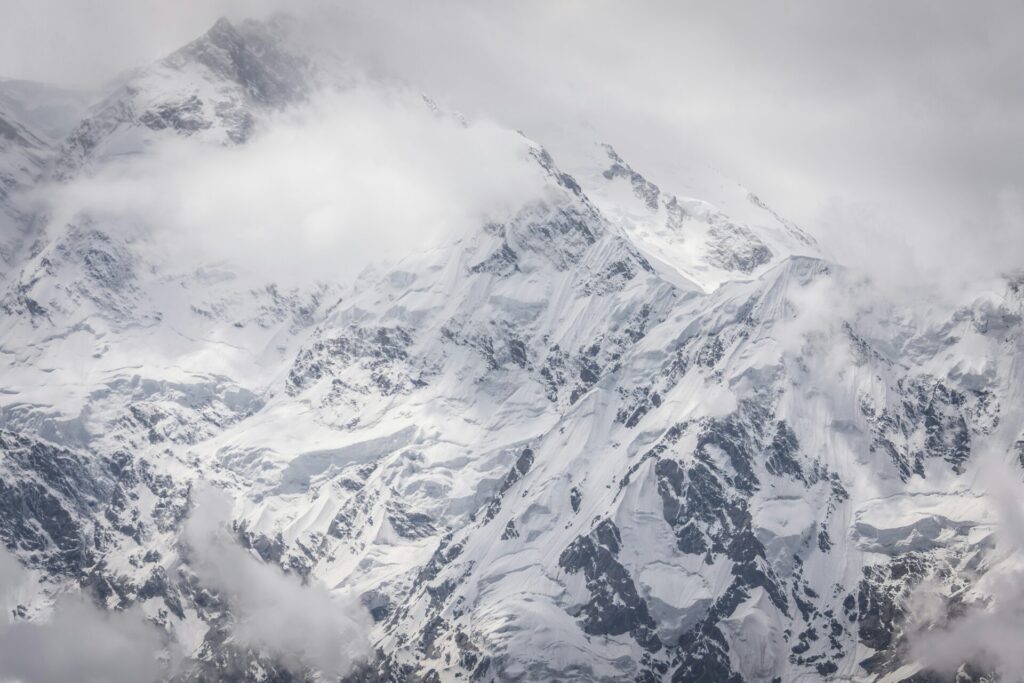Nanga Parbat: A Comprehensive Guide for Adventure Travelers

Nanga Parbat, nicknamed “The Killer Mountain,” is known for its stunning beauty, treacherous paths, and historical significance. Whether you’re an experienced mountaineer or an adventure enthusiast, this towering peak offers a thrilling experience combining breathtaking scenery with historic mountaineering triumphs.
This guide will cover everything you need to know about Nanga Parbat. From its fascinating history and geography to tips for reaching its iconic base camp, consider this your definitive resource for exploring one of Earth’s most challenging and awe-inspiring mountains.
What Is Nanga Parbat?
Nanga Parbat, which means “Naked Mountain” in Urdu, is the ninth-highest peak in the world, standing at an altitude of 8,126 meters (26,660 feet). Located in the western Himalayas in Pakistan’s Gilgit-Baltistan region, it is the second-highest mountain in Pakistan after K2.
What sets Nanga Parbat apart is its height, isolation, and prominence. Separated from the Karakoram Range by the mighty Indus River, it rises dramatically above the surrounding valleys, earning its reputation as one of the most beautiful yet daunting peaks.
Locally, the mountain is also called “Diamer,” its three striking faces—Rupal, Diamer (west), and Raikot—each provide unique challenges for climbers and trekkers.
A Mountain Steeped in History
Nanga Parbat’s allure has drawn explorers from around the globe for centuries. However, its breathtaking beauty comes at a high cost. The mountain’s first known failed expedition dates back to 1895 when A.F. Mummery, a British climber, tragically lost his life while attempting to summit the peak.
Nicknamed the “Killer Mountain” after 31 climbers died before the first successful ascent, its history is sobering. Austrian climber Hermann Buhl finally achieved the first successful summit in 1953 without supplemental oxygen—a feat that remains legendary to this day.
It wasn’t until February 2016 that Ali Sadpara (Pakistan), Alex Txikon (Spain), and Simone Moro (Italy) successfully climbed Nanga Parbat in winter, making history again as one of the most dangerous winter ascents.
Why Visit Nanga Parbat?
Beyond its monumental history, the mountain offers a truly unparalleled experience for adventure seekers. Here’s why Nanga Parbat is worth the trek:
- Breathtaking Scenery: From glacial rivers to untouched alpine forests, every step toward Nanga Parbat offers stunning landscapes.
- Cultural Exploration: Engage with local communities in the Diamer district and learn about their unique traditions and hospitality.
- A Sense of Achievement: Even reaching the base camp is a feat that makes adventurers feel accomplished.
- Unique Challenges: For seasoned climbers, summiting Nanga Parbat is considered the crowning achievement in mountaineering.
Exploring the Base Camps
Rupal Face (South Side)
The Rupal face is the tallest rock wall in the world, rising over 4,500 meters (14,760 feet) from base to summit. It is visually stunning and popular for climbers seeking an extreme challenge.
Diamer Face (West Face)
This face is the most accessible route and the starting point for trekking to the Kinshofer Base Camp. Its scenery includes lush forests and serene alpine meadows, making it a rewarding trek even for moderate hikers.
Raikot Face (North Side)
Visiting Fairy Meadows, located on the Raikot side of the mountain, is a must-see experience for casual trekkers. The name derives from the breathtaking views of the Raikot Glacier and surrounding peaks. Despite its beauty, this face presents its climbing challenges.
How to Reach Nanga Parbat
Reaching Nanga Parbat requires detailed planning. The most common itinerary begins in Islamabad, Pakistan. Here’s what you need to know:
- Journey to Chilas (Day 1–2): After arriving in Islamabad, travel by road through the scenic Kaghan Valley and over Babusar Pass to Chilas, a gateway town for trekkers and climbers.
- Drive to Halala and Trek Begins (Day 3): From Chilas, a 2-3 hour jeep ride will take you to Halala, where a multi-day trek begins through lush alpine terrain toward your base camp of choice.
- Trek to Base Camps (Day 4–6): Depending on your chosen route, expect 4-6 hours of trekking each day until you reach the base camp.
- Climbing Period (Advanced Climbers Only): Those attempting the summit will spend weeks acclimatizing and climbing from base camps via routes suited to their experience and expertise.
Pro Tip: Always travel with local trekking guides or tour companies who are familiar with the region. Their experience is invaluable for navigating weather changes and ensuring safety.
When to Go
The best time to visit Nanga Parbat’s base camps is between May and September, when the weather is relatively stable. However, due to extreme cold and treacherous conditions, winter ascents are only recommended for the most experienced climbers.
Top Tips for Adventure Travelers
- Prepare for Altitude: The base camps are located at high altitudes, so take time to acclimate properly.
- Travel Light: Pack efficient, high-quality gear for trekking and, if climbing, ensure your kit includes essentials like crampons and ice axes.
- Respect Local Customs: The Gilgit-Baltistan region is rich in culture. Dress modestly and continuously engage with locals respectfully.
- Leave No Trace: Protect this stunning environment by ensuring you carry out all waste and minimize your ecological footprint.
Beyond Climbing—Cultural and Natural Wonders
While mountaineering may steal the limelight, Nanga Parbat offers so much more. Plan time to explore Fairy Meadows, visit the Indus River Valley and immerse yourself in the hospitality of local villages.
For wildlife enthusiasts, watch for ibex, snow leopards, and golden eagles that call the region home.
Is Nanga Parbat Right for You?
Whether you’re a seasoned mountaineer or enjoy trekking, Nanga Parbat offers a little something for everyone. Adventure travelers can tread moderately challenging paths to breathtaking base camps, while elite climbers can join the ranks of legends who have summited this iconic peak.
Everyone who visits Nanga Parbat leaves with unforgettable memories, stories of resilience, and a newfound appreciation for nature’s raw power.
Embark on Your Adventure Today
Are you ready to take on one of the world’s most awe-inspiring peaks? Whether you’re reaching for the summit or simply gazing up from Fairy Meadows, your Nanga Parbat adventure starts now.
For guided trekking tours and expert insights into planning your trip, check out reliable local tour operators to ensure the experience of a lifetime.
